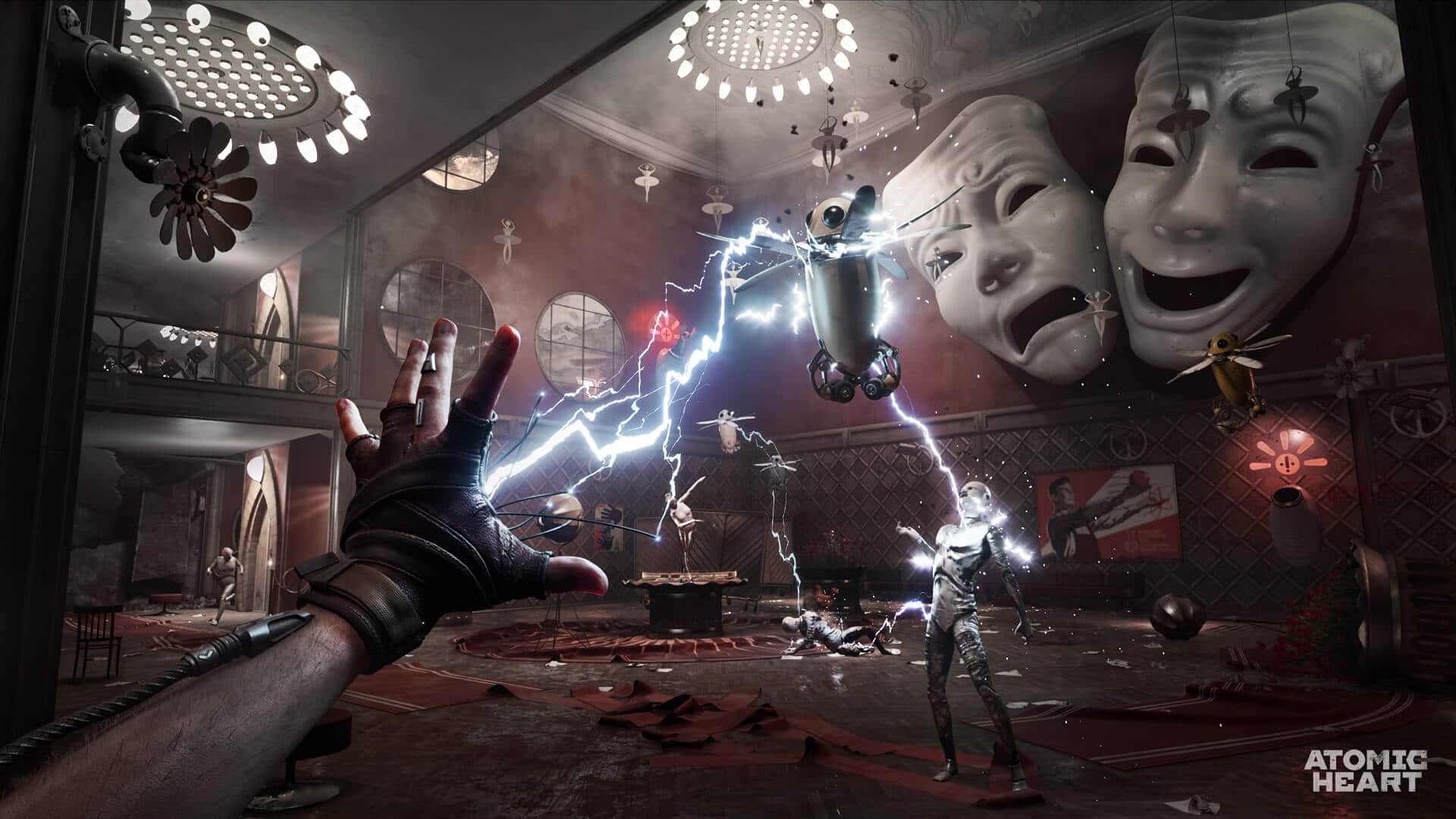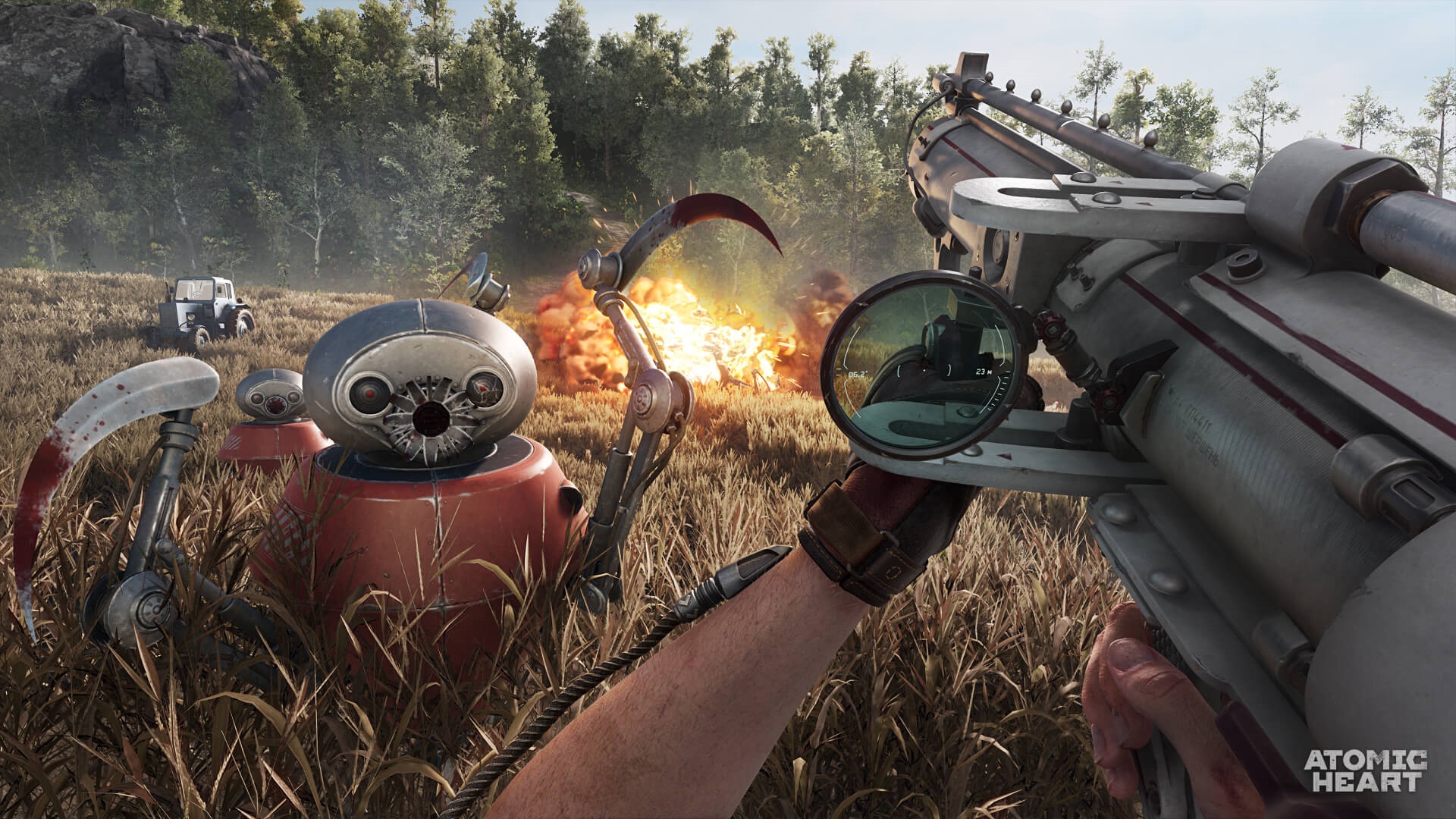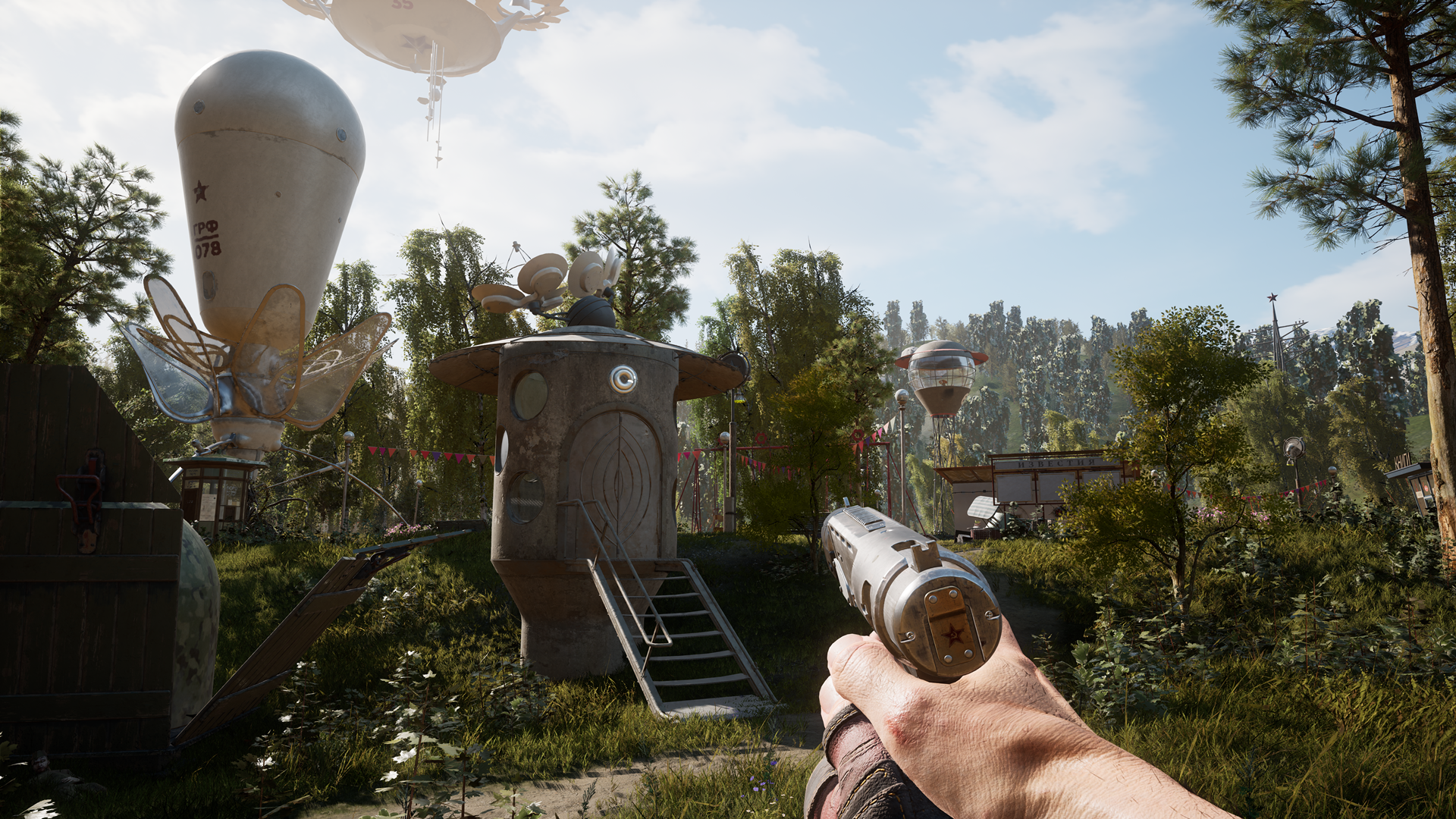The first game from Mundfish has been hotly anticipated since it was first announced in 2017. Looking to be part Fallout and part BioShock, the game has generated a significant amount of hype.
That’s especially true here in the Hypertext offices where the first visuals we saw of this game captured and then held our attention. It’s a pity then that the gorgeous art, landscapes and characters in Atomic Heart, don’t do much to overcome the game’s failings.
Let’s jump in:
Welcome to Facility 3826
Players take on the role of Major Sergey “P-3” Nechaev who handles situations for one Dmitriy Sechenov.
As it so happens Sechenov is a visionary who has created a substance known as Polymer which is used for, well, anything. In addition, the good doctor is launching Kollectiv 2.0, a neural network that allows machines to communicate with each other and humans through something called a THOUGHT device.
These humans are Polymerised, as is P-3 who also has access to a special glove called CHARLES. This glove is both your companion offering hints to the player and a tool that can be used to interact with the environment and lay waste to enemies.

The story takes place in 1955 after Russia won World War 2, yes, won the war. The country has experienced a technological boom since those days and machines have freed humans from physical labour. Facility 3826 is the location of a sort of concept city in which robots collaborate with humans, solar power runs everything and people zip from area to area using monorails and flying vehicles.
After players become acquainted with the movement system and CHARLES’ basic functionality, we are thrown into the thick of it. The robots are suddenly turning on the humans they are meant to protect and you are hurled into a facility in a bid to find the person believed to be behind the robots turning from friend to bloodthirsty automatons.
Here you learn how Atomic Heart’s combat functions, the importance of upgrading your weapons and abilities as well as the platforming that one will encounter.
A fully loaded ship
This is also where the first cracks in Atomic Heart start to show. The combat systems at play here are woeful. Combat includes the use of melee weapons, firearms and abilities. These can all be used at the same time and it could allow for some interesting combat scenarios.
The trouble is that cycling between your combat options is cumbersome. Weapons have a draw speed and switching between them requires some frankly insane controller skills to accomplish. Enemies are constantly moving toward the player so you’re strafing and back peddling a lot of the time and while at times this gives you a gap to switch weapons, more often than not you’re simply trying to survive, heal and do what damage you can.
Despite having options for aim assist there is no aim assist to speak of, at least not that we can find. Added to this, there is no targeting system so players are left to flail wildly when engaging in melee combat which is – in our experience – the primary combat method you will be using due to the scarcity of ammunition.
Firearms are strong but hard to control. This may not be a problem on PC where a mouse can precisely target enemies but on console the weapon aiming experience feels like it was plucked from one of the first FPS games ever made.

Once you get out into the open world combat becomes a pain and there were many instances where we simply ran away from enemies rather than trying to engage them. Sometimes these enemies would follow us and other times they’d abandon us. It’s very confusing for a player when the behaviour of enemies is so unpredictable.
But we really lost it when we faced our first boss.
This boss in question is able to become a spinning ball that chases the player around an area. The boss moves fast and here we find the next big problem of Atomic Heart – P-3 moves like a snail. In this particular boss fight players need to raise platforms to get the boss to ram into them, stunning them.
The trouble is that players move like a fully loaded container ship and an act as simple as pressing RB on an Xbox controller to raise a platform feels like it takes an age. Players have access to a dodge button but this ability features a cooldown of a few seconds so a poorly timed dodge can cost you dearly.
Try as we might, the boss kept getting the better of us. So, we tried to drop the difficulty and that’s when we realised we were already on the easiest setting available, one designed to put focus on the narrative rather than the combat.
We understand that challenge is an intrinsic part of some games, in fact, it’s one of the reasons we loved Elden Ring. The glory of overcoming a challenge and the dopamine hit it yields is a great motivator but there is a balance between challenging and unfair that Mundfish frankly fails to achieve.
This can be seen in regular encounters in the open world where one wrong move will see you swarmed by robots that can all attack at once and leave you feeling helpless. Sure you can go back and try again but after your fifth pass through an area, being spotted by cameras and then encountering a swarm of robots, one simply feels like giving up.
This is hugely problematic as exploration and looting are essential parts of Atomic Heart. Players need to loot everything they can to upgrade their equipment but this is at odds with the need to clear out an area every time you want to loot the buildings around you. This is worsened by the fact that if you fail, enemies will respawn along with you when you try to restart an area.
The reason looting is so important is because there is a massive focus on crafting everything from weapons to ammunition in this game. Players will find blueprints and consumables around the map which you will be using to craft throughout your playtime.
Upgrades are important and you can easily refund Polymer to try new abilities which can be fun. With that having been said we suspect that players will find the most effective tactics available and stick with those.
Overall, Atomic Heart feels like it’s missing things. One prime example is the recommendation that you play the game with Russian audio and subtitles in your preferred language. Try as we might we couldn’t get the game to switch to Russian audio. Perhaps this was simply left out of review versions but we can only comment on the product we have access to.

A great story to tell
In spite of all these problems, Atomic Heart has a compelling story.
Facility 3826, while stunning, quickly becomes a marker that differentiates the haves and have-nots. While some areas of the facility are clad in gold, others are more sinister. The first area you encounter is underground and there’s something rather sickening about seeing fake landscapes projected on video screens as you read about the horrors of what happens in some of the labs.
There is of course Russian/Soviet Era propaganda but it’s used as an effective tool that gets the player staring quizzically at the dialogue. Even P-3’s devotion to Sechenov is alarming as is the endless propaganda shovelled at the player. This works to sow distrust in the powers that be. Finding out what is really happening in the Facility is a great motivator to push players forward especially when it feels like we only have part of the story.
However, for all of the story’s high points, the combat and movement in this game upend the hard work the narrative puts in and players are likely to end up feeling more frustrated than intrigued.

The environments, music and models of everything from the players to the robots are incredibly well done but sadly it’s hard to concentrate on those wins with so many problems in the game hampering the overall experience.
Buy, wait for a sale or skip?
Here’s the rub – Atomic Heart is available on day one as part of Xbox and PC Game Pass. This makes it easy enough to say “have a look at it if you have a PC or Xbox”. Spending money on this however, is where we need to intervene.
As compelling as Atomic Heart’s story is, the combat and movement serve only to frustrate players.
There are great moments in this game that will drop your jaw but moments later you’ll be tugging at your hair in frustration.
The visuals of Atomic Heart are spectacular to behold but much like the game, the paint hides a game with janky controls and a combat system that creates frustration more than it creates a feeling of power.
For those considering buying Atomic Heart, we recommend waiting for a sale and potential updates to the game.
A targeting system, language options, better movement speed and enemies that don’t swarm the player could be fixed with patches but as this is Mundfish’s first game, we aren’t sure what to expect as regards post-launch support.
For now, unless you have Game Pass, give this one a skip and pick up the BioShock Collection instead if you’re looking for a game that does what Atomic Heart does, but well.
Final Score: 5 out of 10
Disclaimer: Atomic Heart review code was provided by Gamefinity for the purposes of a review. Gamfinity, Mundfish and Focus Entertainment have no influence on the final review.

